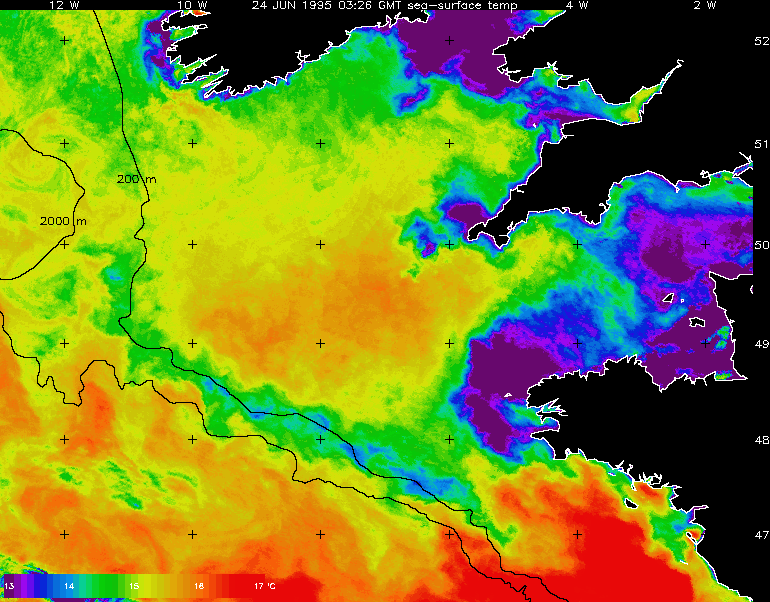Topic Area
Shallow Sea Fronts
Project Team Member
LT Charlotte A. Welsch, USNR
Major Findings
Shallow sea fronts are one of the six types of fronts usually classified in oceanography. They are also one of the smaller features in mesoscale oceanography. The other five common classifications of fronts are planetary fronts, shelf break fronts, upwelling fronts, plume fronts, and estuarine fronts. Shallow sea fronts share common features with all other fronts. The primary feature in all fronts is that a characteristic or property of the water changes markedly over a short distance. The front is defined as the region where the horizontal gradient of some property goes through a maximum. The magnitude of the change in the property defining the front is an order of magnitude greater across the width of the front as compared to the same distance on either side of the front. This distance is on the order of 5-10 km for shallow sea fronts. This distance can range from as little as a few meters for estuarine fronts to 100km for deep ocean fronts. A second characteristic common to all fronts is that there is convergence at the front.
Shallow sea fronts occur in shallow regions with strong tidal currents. They are a result of a competition of two energy sources, solar heating and tidal currents. As the tidal current moves a volume of water into the shallow region, the stratification set up by solar heating of the open ocean can no longer be maintained. This is due to the increased velocity of the current compensating for the decreased depth causing strong mixing. The water inside the shallow region is well mixed and nearly homogeneous in character. The temperature of the well mixed region is approximately equal to the temperature in the center of the thermocline. The frontal boundary is located where the stratified open ocean water meets the well mixed water. This boundary can be seen in satellite imagery of sea surface temperature and is located where the warm ocean water meets the homogeneous mixed water, which has a lower temperature. It is also possible to predict the approximate location of a shallow sea front by using the water depth and the maximum tidal velocity in the ratio of h/u3. Shallow sea fronts are found where the log10 h/u3 = 2.5. A comparison of the two methods in the vacinity of the Irish Sea reveals a very good correlation between the two.
For more information regarding shallow sea fronts, I encourage you to
explore the referenced web site by M. Tomczak. There you will find interesting
and informative diagrams and images.

References
Copley, J., Web Page "Coastal and Estuarine Oceanography", http://www.soton.ac.uk/SOES/MSC/OC/CEO/main.html
Tomczak, M., Web Page "Fronts in shallow seas and estuaries", http://www.es.flinders.edu.au/~mattom/ShelfCoast/notes/chapter09.html
Tomczak, M., and Godfrey, Regional Oceanography: An Introduction, 317-321
| This is a government-maintained internet site. Please read the U.S. Navy web page disclaimer and the disclaimer regarding external links. |